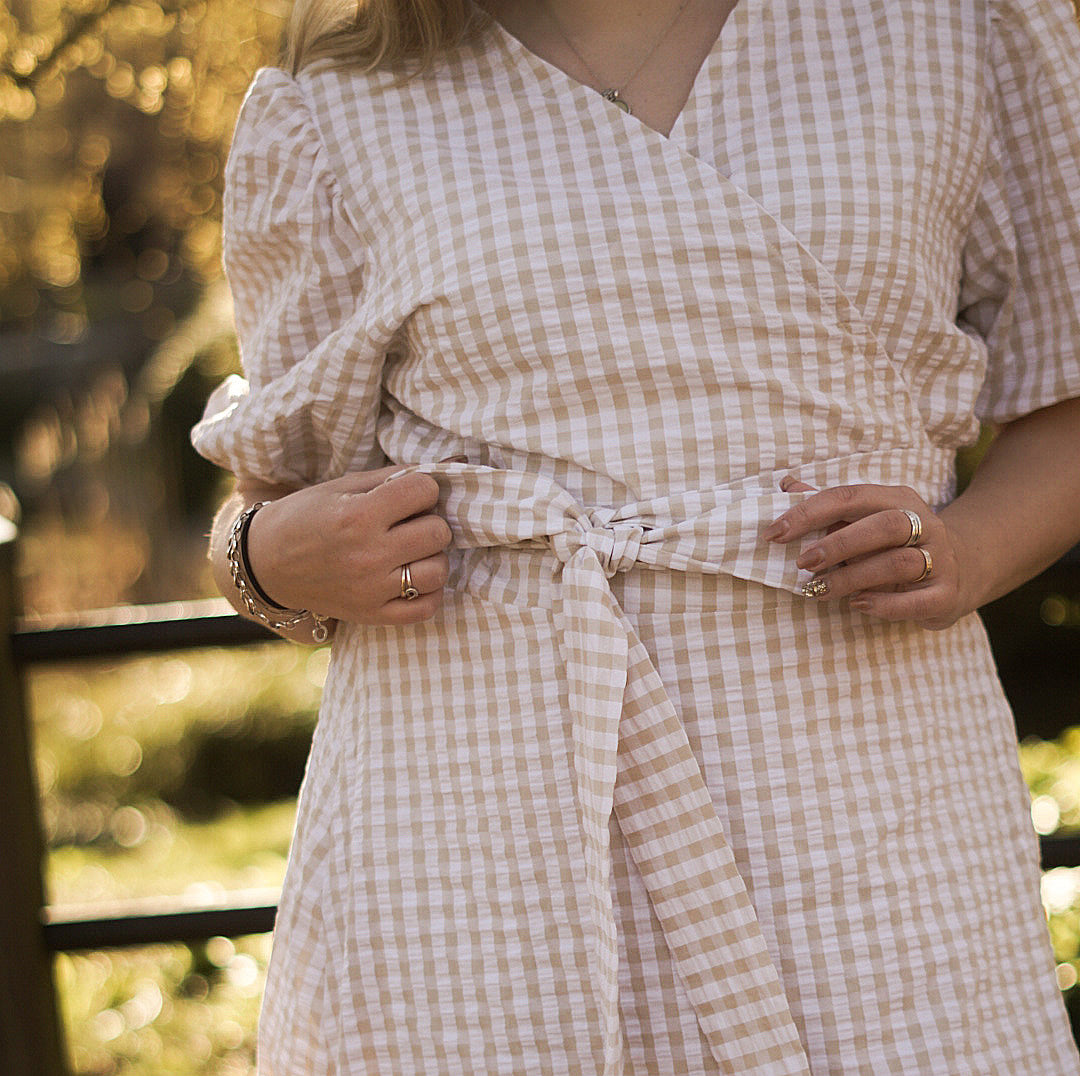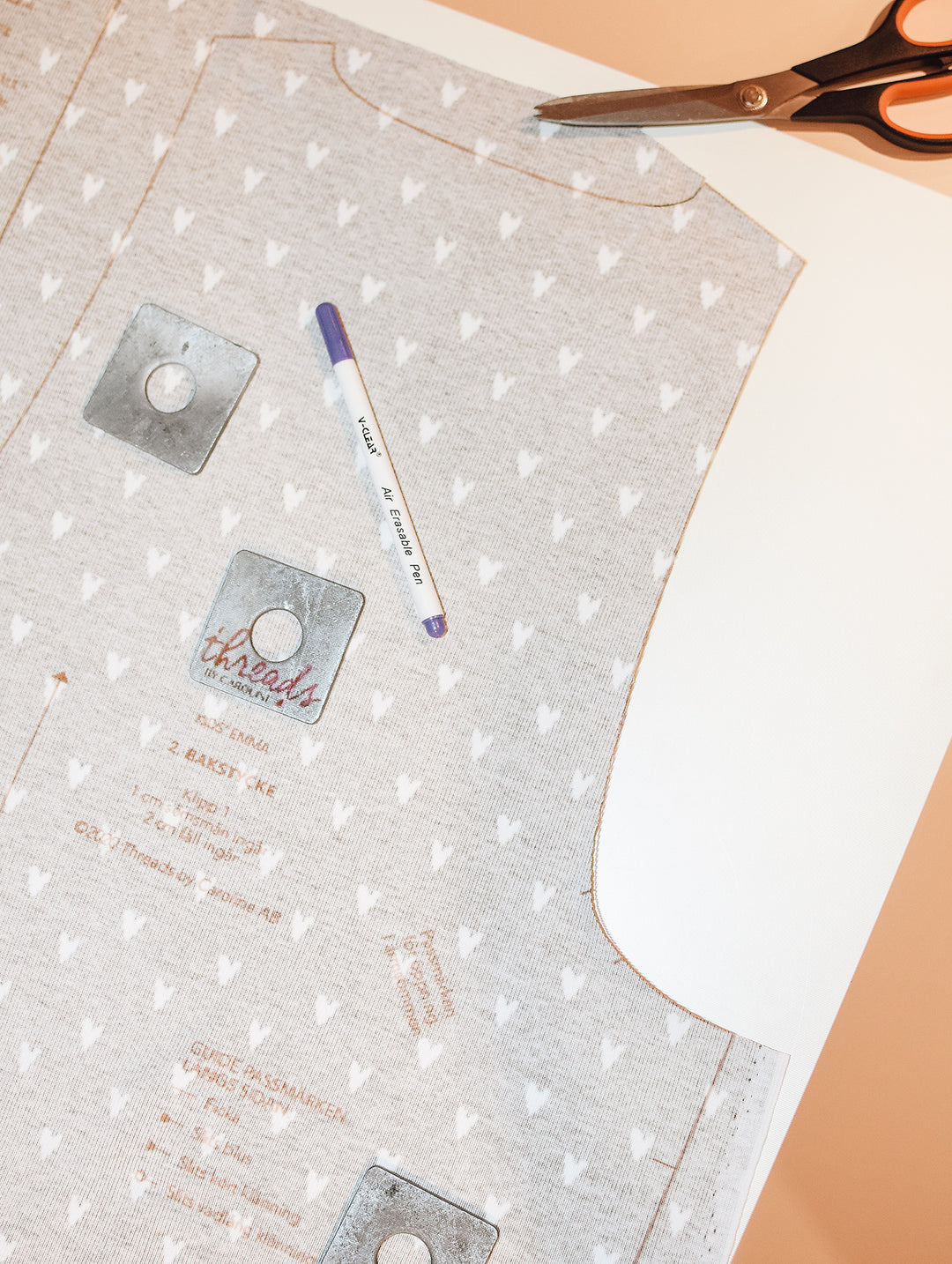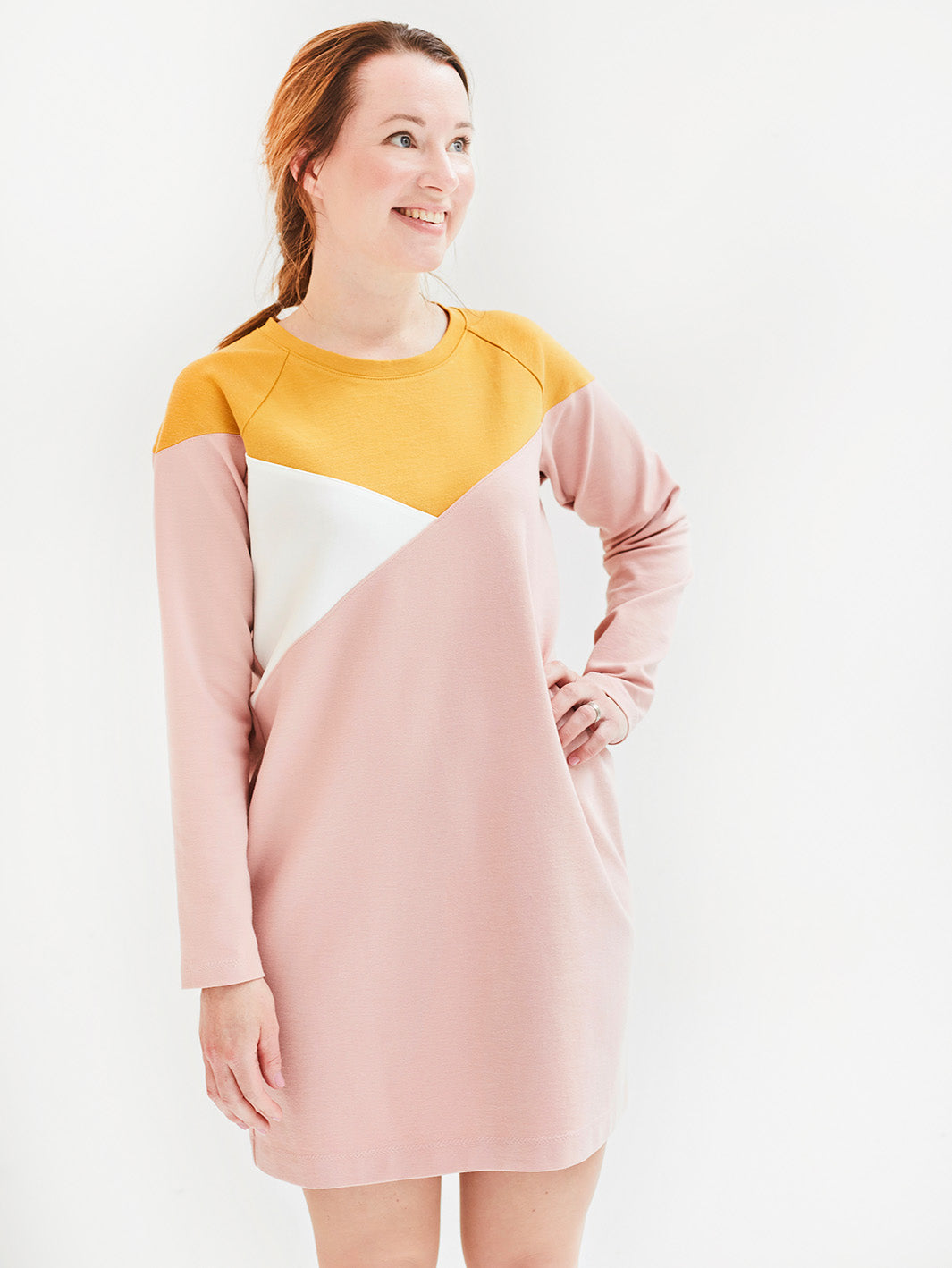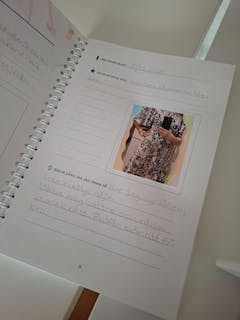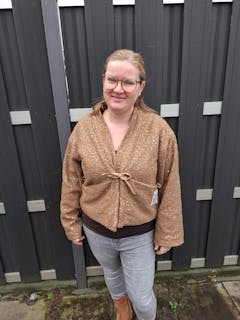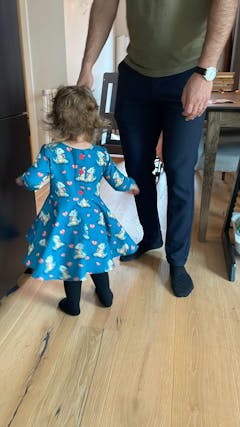See fabric requirements chart among the pictures.
YOU WILL NEED:
- Knit fabric with at least 30% stretch, light- to heavy weight, for example: jersey (cotton, viscose, tencel etc), french terry, ponte di roma, ottoman, knit jacquard etc. Use a fabric that’s bi-elastic, meaning it has 4-way stretch. Note that the fabric for the sleeve cuffs, neckband and waistbands doesn’t have to be ribb fabric, you can use any knit fabric as long as it has at least 30% stretch. Prewash all fabrics before cutting, knit fabrics usually shrink with the first wash.
- Firm transparent elastic (6-10 mm wide, approx. 1/4-3/8” wide), such as Framilon tape, to gather variant A, see approx. length in chart below. If you want to gather the bishop sleeves with elastic too, instead of gathering stitches, you will need an additional 30-40 cm (12-16”).
- A belt buckle, if you want a belt for the dress variant.
- Optional for the mock turtleneck: fusible interfacing with at least 40% stretch, for example Vlieseline H609. If the interfacing doesn’t have enough stretch it might be too tight to pull the head through the turtleneck. Iron the interfacing on to the wrong side of the mock turtleneck before sewing it, for more stability. Whether or not you need interfacing depends on your fabric (generally if it’s light weight) and your preferences.
- Optional for the belt: fusible interfacing with little or no stretch, for more stability.
ALSO USEFUL:
Aqua glue marker, tape measure, fabric scissors, pins/clips, iron and a sewing machine with coordinating thread. Suitable needle for your fabric (a stretch needle is usually recommended for knit fabrics).
ABOUT THE FABRIC REQUIREMENTS CHART:
The fabric requirements table is an estimation for 150 cm (60”) wide fabrics, not preshrunk. We recommend you to add 20 cm (8”) extra if you’re purchasing new fabric for this project, and account for shrinkage.
*Only for variant A. This is also an estimation, since the stretch may vary between different elastic bands.
